How to Navigate an Italian Market
A Guide to the beautiful, yet unhinged Italian Market Experience
I recently wrote about the ydillic, seasonal, movie-like experience of going to a French market, and it is only fair that I now adress the absolute, beautiful chaos that is the experience of going to its Italian counterpart. Ladies and gentlemen: welcome to Italian market shopping, were everyone is always jolly, lines don’t exist and you’re allowed to have as many cappuccinos as you like up until noon.
While what I wrote about navigating a French market is also valid here (things like seasonality, shopping ingredient-forward etc), Italian markets present some peculiar traits that make them very different than French ones. And, as everything in Italy, the experience changes enormously depending on the latitude you’re at while in the Boot. As a native to center/northern coastal Italy, I have tried to identify some colorful characters you might find in most of the country - those character that make going to the market such a folkloristic experience.
Most of the photos from this article are from the lovely Mercato di Sant’Ambrogio in Florence, some from Trastevere, some from my hometown.
Enjoy!
1. First things first: cappuccino before (and/or after) the market
Italy has cafés everywhere, and a market experience wouldn’t be complete without a cornetto and cappuccino before you dive into your groceries (I HATE that quite often I can’t find both at the same place here in France). Or after. or both. Market days just means crowds of people setting at cafes before or after grabbing their loot and it is acceptable to stay as long as you like.
Italian markets also close a little later, most stalls staying well after noon. Peak time is usually 10.30 AM.
2. That One Guy/Gal From the South
Most markets that are not in the south will have one stand coming from Puglia or Naples selling citrus, olives, sottoli, taralli, mozzarelle and the like. My town’s market has one Pugliese and it is one of my favorite stalls ever. It also has one Napoletano, selling great citrus, veggies and, when in season, artichokes. Do get the sottoli, especially if you find fun stuff like lampascioni, friarielli or pomodori. I’d skip the bread - for some reason these guys always have the industrial, dry pane pugliese which had nothing to do with the actual thing you can get in the south.
If you are in the south, bless your soul. Eat all the things. Get a fresh mozzarella for me, too.
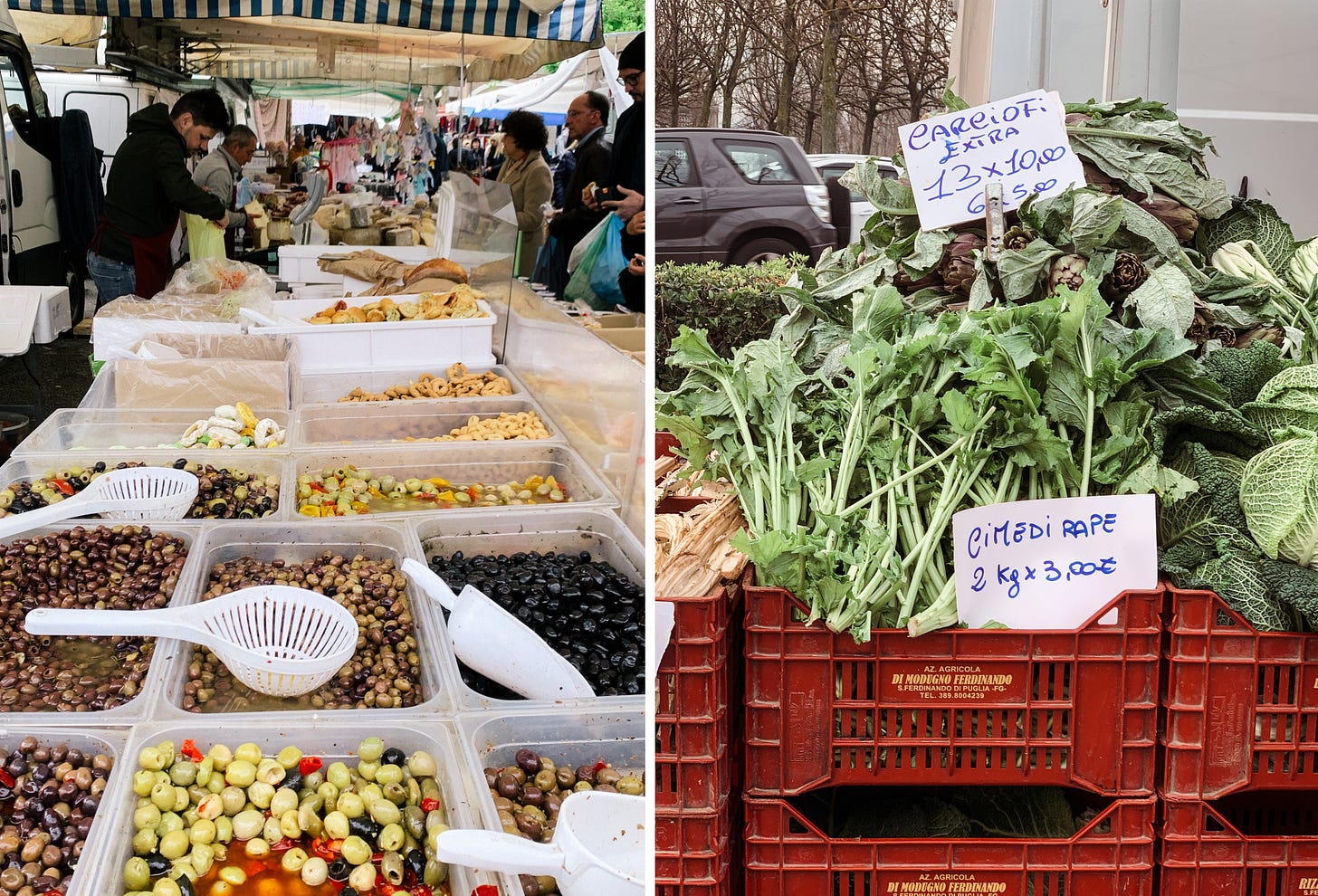
3. That One Guy/Gal Selling Porchetta
Hands down the most important person in the market. The VIP of any Italian’s shopping sprees.
This is a real specialty of central Italy: no market is complete with one or more trucks selling roast pork of some sort (my town has 3). If you see them, stop by: they will ask if you want your porchetta magra (lean) or grassa (fat). The good thing is to have a balance of the two: you can say un po’ e un po’ (a bit of this and a bit of that). They will also ask if you want the super crunchy cotenna (the skin) and a piece of the salami made with the trimmings and leftovers of the pig, which they usually throw in for free. Many will ask if you want a focaccia or a porchetta sandwich (you’ll see that they have bread somewhere on their stall): best lunch ever. In Florence, in Sant’Ambrogio, I’d usually get my 5 euro porchetta focaccia with artichokes sottolio for lunch. Bliss.
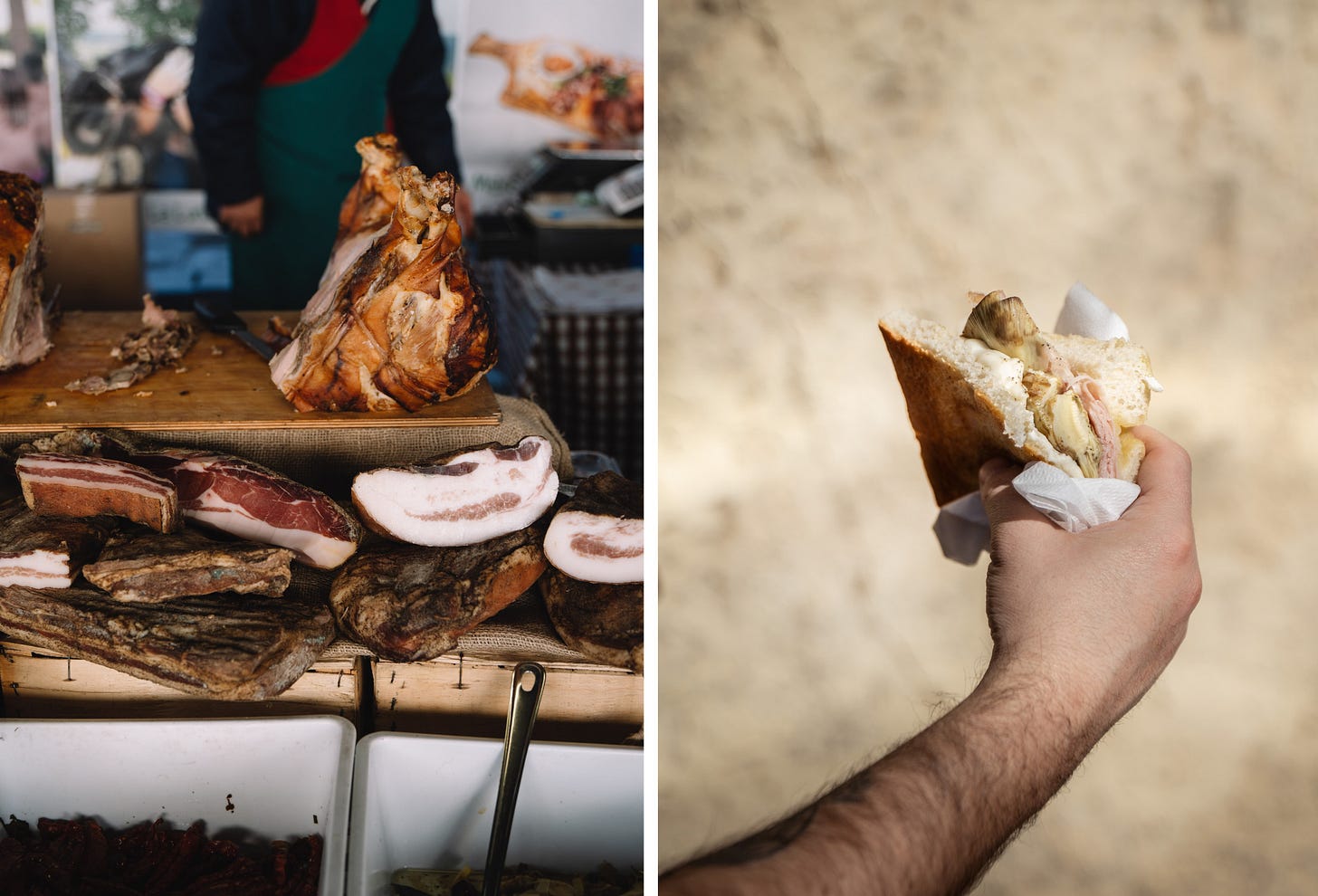
4. Haggling can be a thing
In some markets - not all! But in some - you can sort of haggle. Or, rather, vendors will offer you bundle prices or discounts if you buy more (one of the phrases I’ve heard the most at my town market is dai che ti faccio bene - ‘come on, I’ll make a good price for you’). This is very typical of That One Guy from the South (say you’ll buy a crate of oranges rather than just a bag) or with some clothes vendors.
You don’t really want to go there with the goal of haggling, but there is definitely room for negotiation. This is something that you would NOT do at a French market.
I also think this changes with the latitude, and the further south you go, the more people are into the idea of haggling to some extent.
5. People give you bags
One of the things that stunned me the most about going to the French markets when I moved was that everybody just came with their own basket and there are no plastic bags in sight - maybe some will have the brown paper ones. In Italy, you’ll walk away carrying enough plastic to pollute the Adriatic.
You can - and should - bring your own bag, or even cart if you wanna match with the old preppy ladies who will be standing in your way chatting while you’re trying to reach for some lettuce.
In many cases, the vendors will pick your produce for you and there’s no touching it. Some, like the Coldiretti ones (see below) will just hand you a bag and tell you to help yourself.
6. Seasonality & Regionality
Italian markets, just like French ones, are very region-oriented, and some things will be very specific to a region in particular. Names of the same produce might change depending on the region, too.
Most produce is also very seasonal: you will only find strawberries in april-may and zucchini flowers for like a month in the early summer. Meat and seafood are seasonal as well and, sometimes, cheese too.
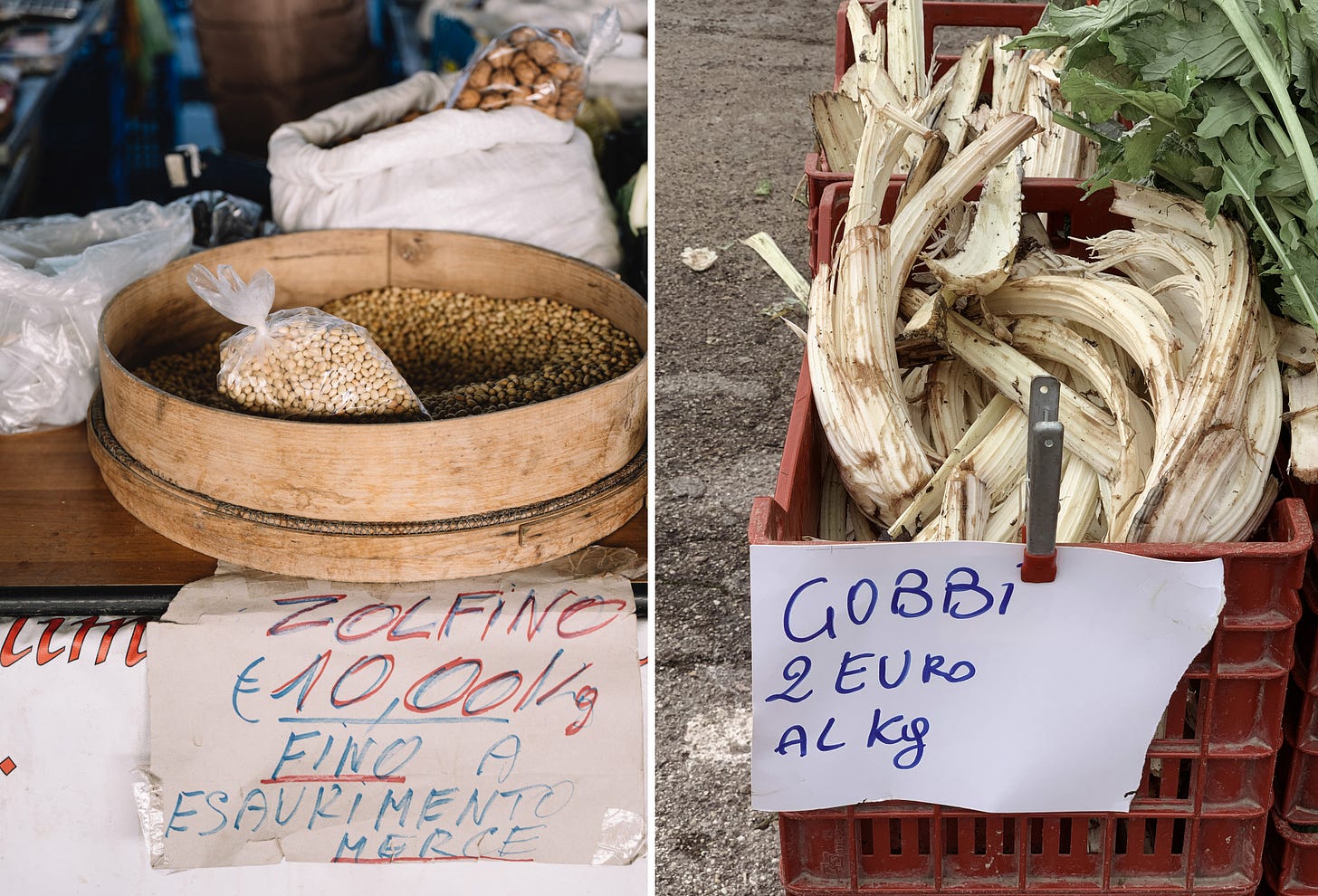
7. The Shouting
Italian markets are very loud. Vendors will shout at you to attract your attention. I love this part of the market and I miss it dearly, and I think it really adds to the folkloristic experience. If you don’t understand what they’re yelling at you, that’s fine - they’re probably chanting about how great their stuff is. You can also ignore them and walk by and no one will get offended - it’s literally their job.
You will also run into a lot of people standing in the way. You can call their attention to move away by saying permesso, or just gently nudge your way through, and they won’t even notice. If you go anywhere in the world and there’s someone chatting while standing in front stairways/doors/stuff you eed to reach, you can be sure they’re Italians.
8. The organic food market is usually separate and it’s Coldiretti
While in France the market naturally includes mostly local farmers and organic producers, Markets in Italy are often crowded with vendors who buy their stuff from third parties, supermarket-style. If you’re looking for the good farmer’s market, you’ll have to look for the yellow tents. They are the farmers that are part of the Coldiretti, who are guaranteed to sell you ther own stuff produced in their own farm. You will still find other producers that make their own stuff, especially cheeses and meats, who are not necessarily part of the Coldiretti and don’t have the yellow tent. Still, they will mostly be confined to their own corner within the market and you definitely want to pay them a visit.
9. Butchers don’t necessarily sell charcuterie
Butchers will usually have things like salsiccia secca and prosciutto, but they won’t necessarily have a vast array of it if they don’t produce it themselves. Italian butchery tends to be quite regional and seasonal, so do not expect to find all kinds of meats and many kinds of cuts.
Unlike in France, butchers will hardly ever have meat that has already been dressed in something - maybe bigger markets do.
To find a selection charcuterie, you might need to go toto the porchetta stall, or to…
10. The very big cheese/charcuterie/baccalà stand
You can usually locate this one from the stink alone. I have seen it in many markets and my town always has one.
It is basically a sort of supermarket-ish stand that sells eggs, milk, huge blocks of Parmigiano, cold cuts of all sorts, some packaged basics and, most of all, stacks of stinky dried cod, or stoccafisso. Some will have the soaked version ready to sell - baccalà.
You can probably go and ask them to make you a panino with the charcuterie and cheese, too. I hardly ever shop from this stand, but I love to see it.
11. Queuing
This is a very important part of the Italian experience as a whole: Italians can’t queue. That’s a fact. Here in france, people form long, orderly lines to the side of the stall so that no one is in the way. You can forget this in Italy. We are unhinged - especially the nonnas.
Therefore you might, to make up for the absolute lack of social rules, be asked to take a number. Otherwise, you’ll just have to join the classic Italian wedge-shaped queue or the crowd of people looking at each other under their eyebrows, trying to keep count of who came first and who came last, someone shouting chi è l’ultimo? (who’s the last one?) and usually people will not skip in front of you.
Usually. Not all the time. Be patient.
In spite of the stressful experience that the Italian market can be, I find it so, so much fun. I feel that the French experience makes for a more social, relaxing rendez-vous where you can also get incredible produce to boot. The Italian market experience is way more chaotic, sometimes interlaced with both crappy and egregious stuff to buy, noisy and tiring, but in a good, party-like way. Imagine it like a morning aperitivo.
I am very happy with this guide. I would love to know your Italian market experiences or, if you live in Italy, know what’s to be found in your region!


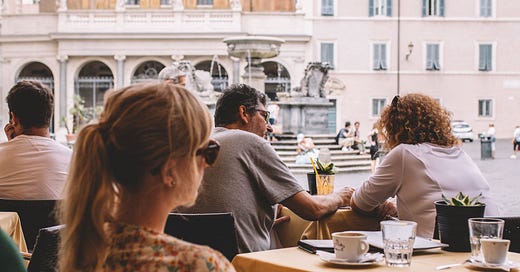



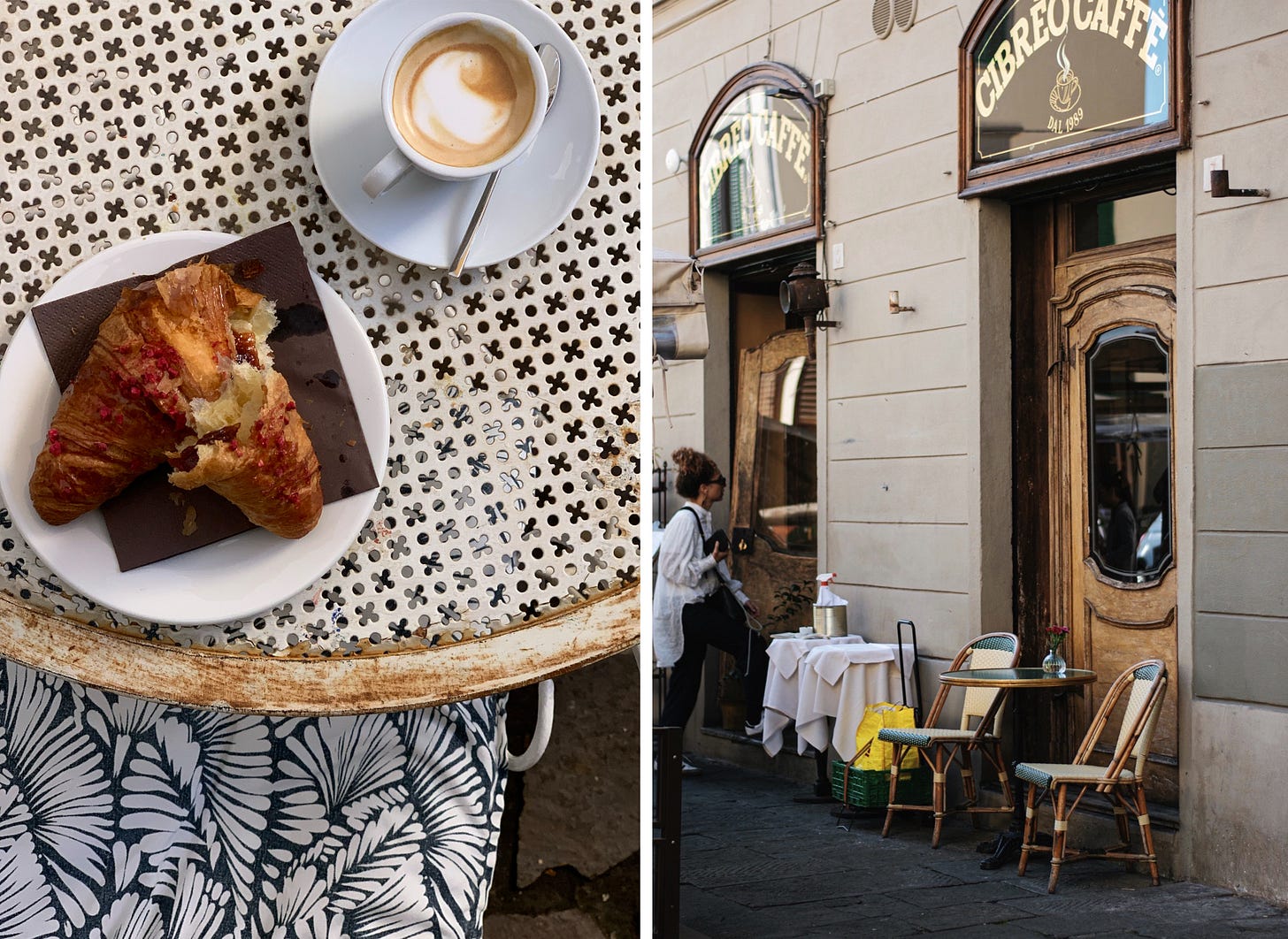

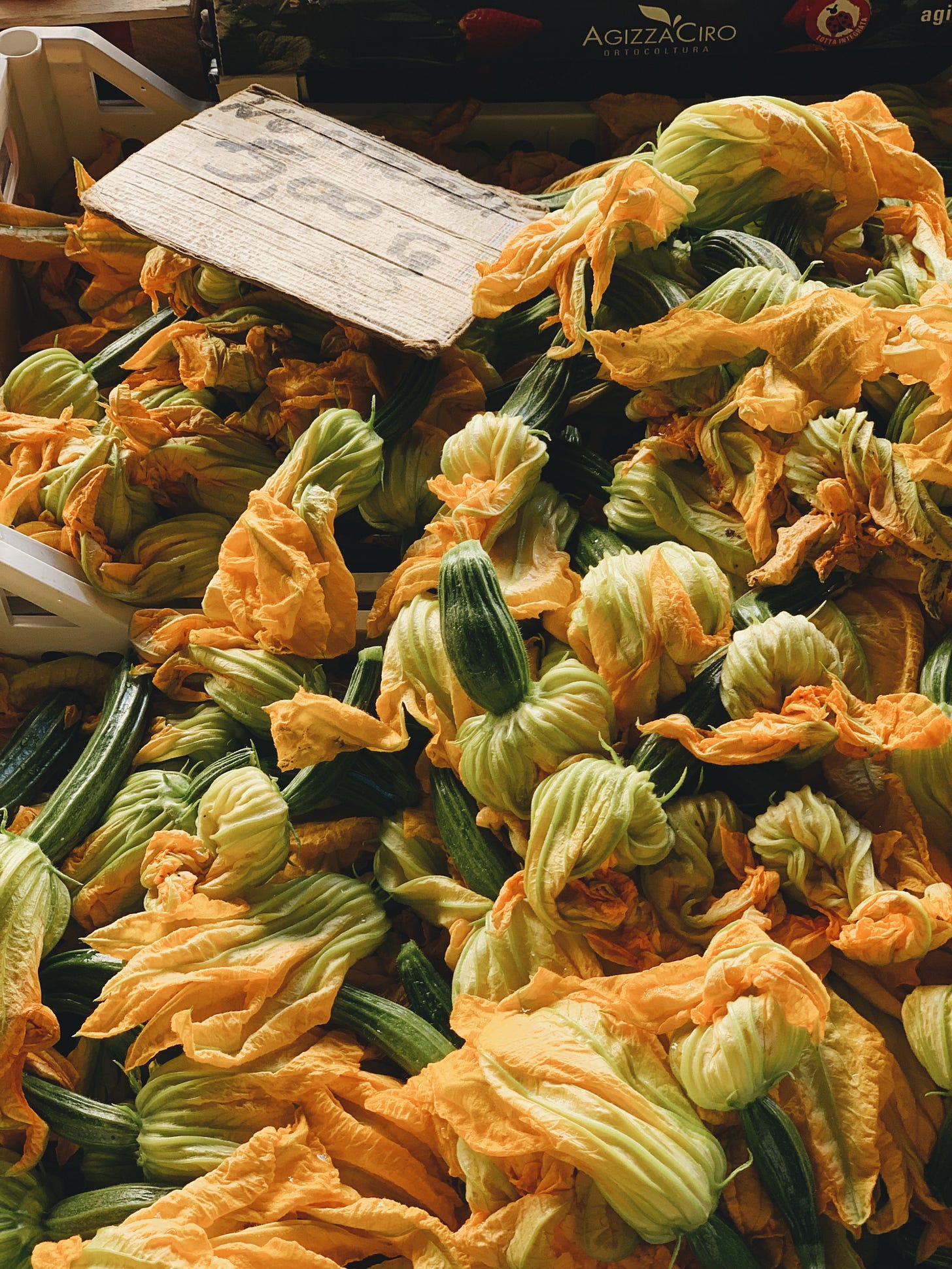

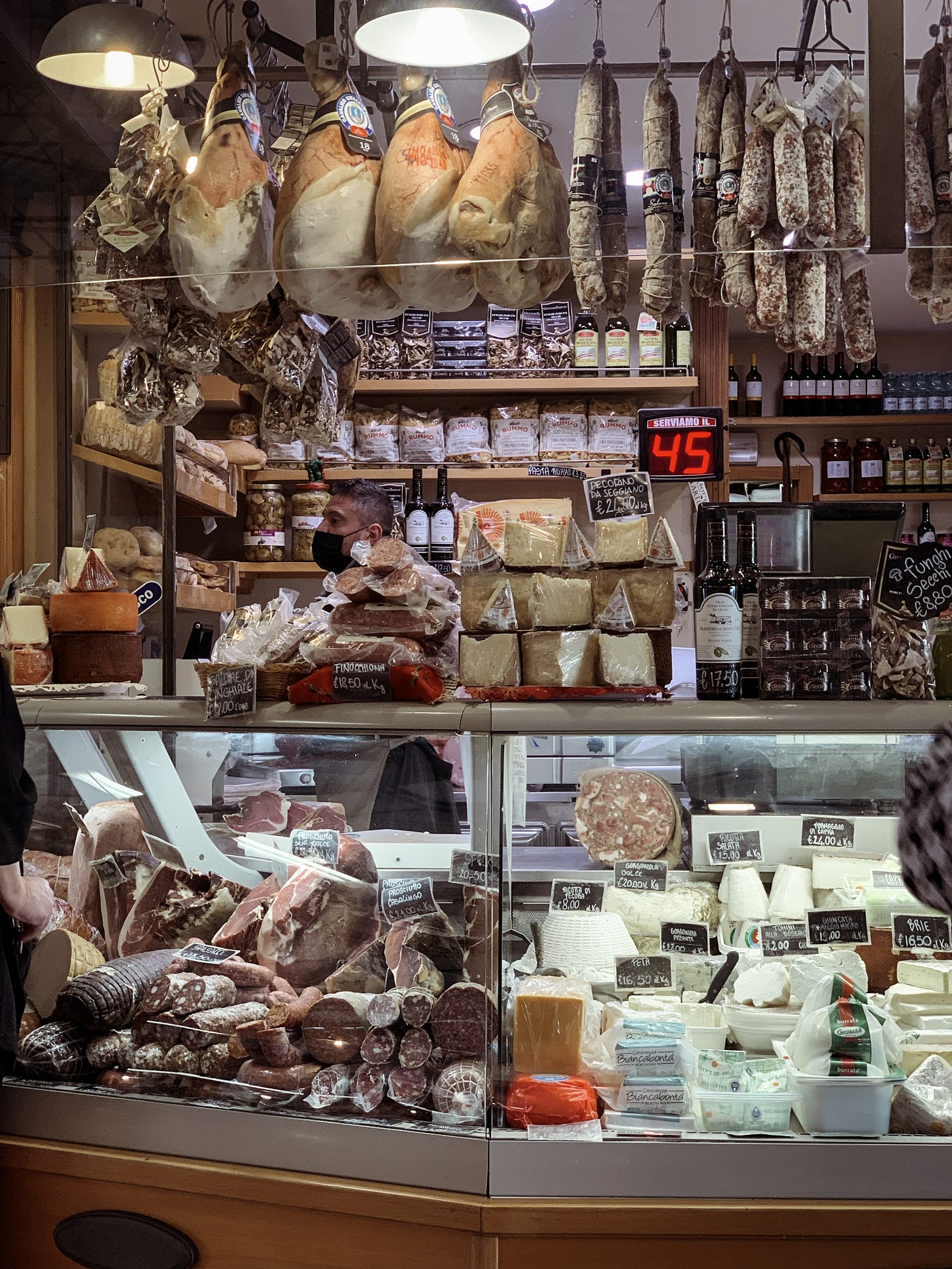
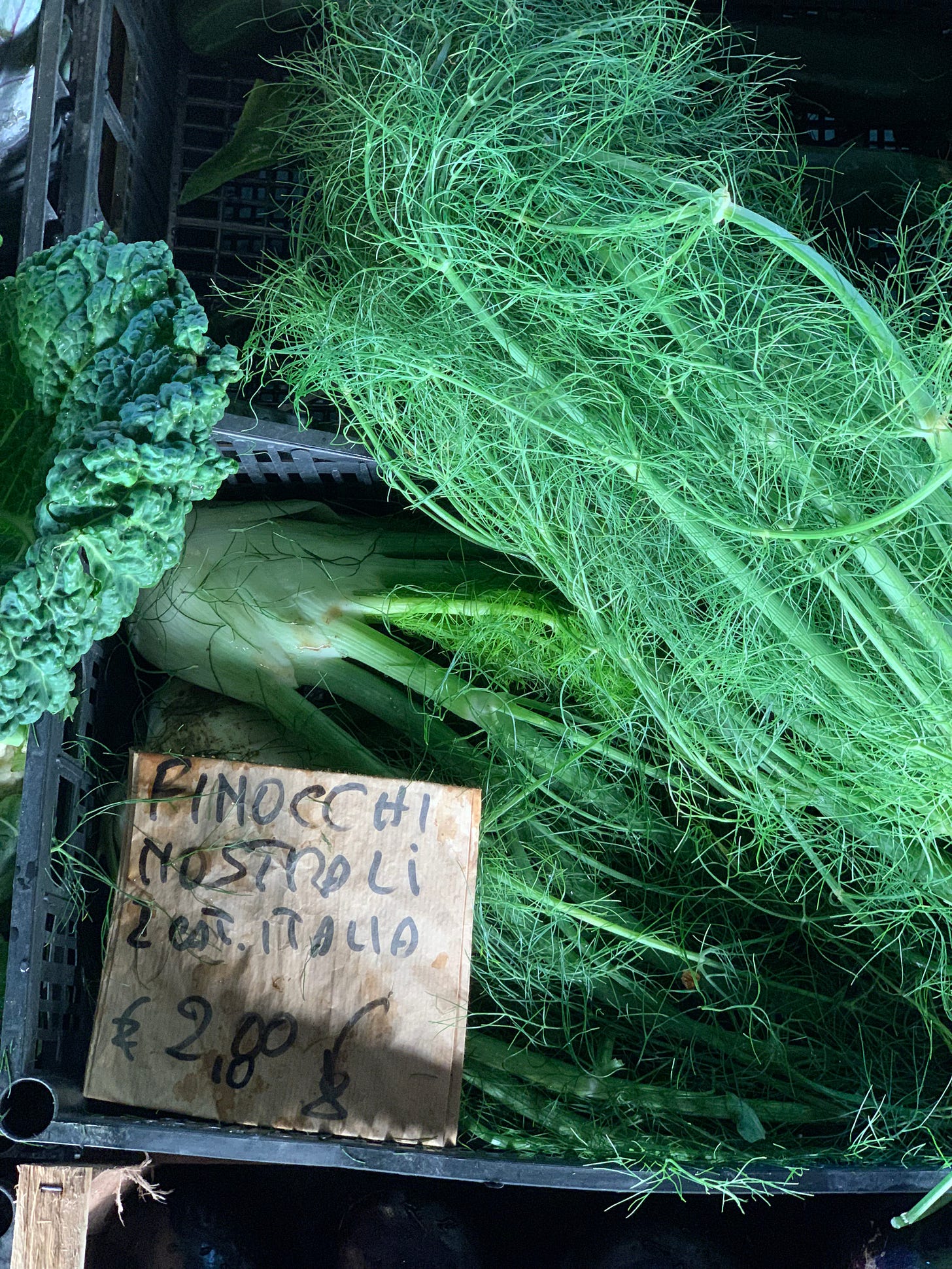
Nonnas unhinged! 😂😂😂
Why do I torture myself reading this. 😄
Everything looks great.